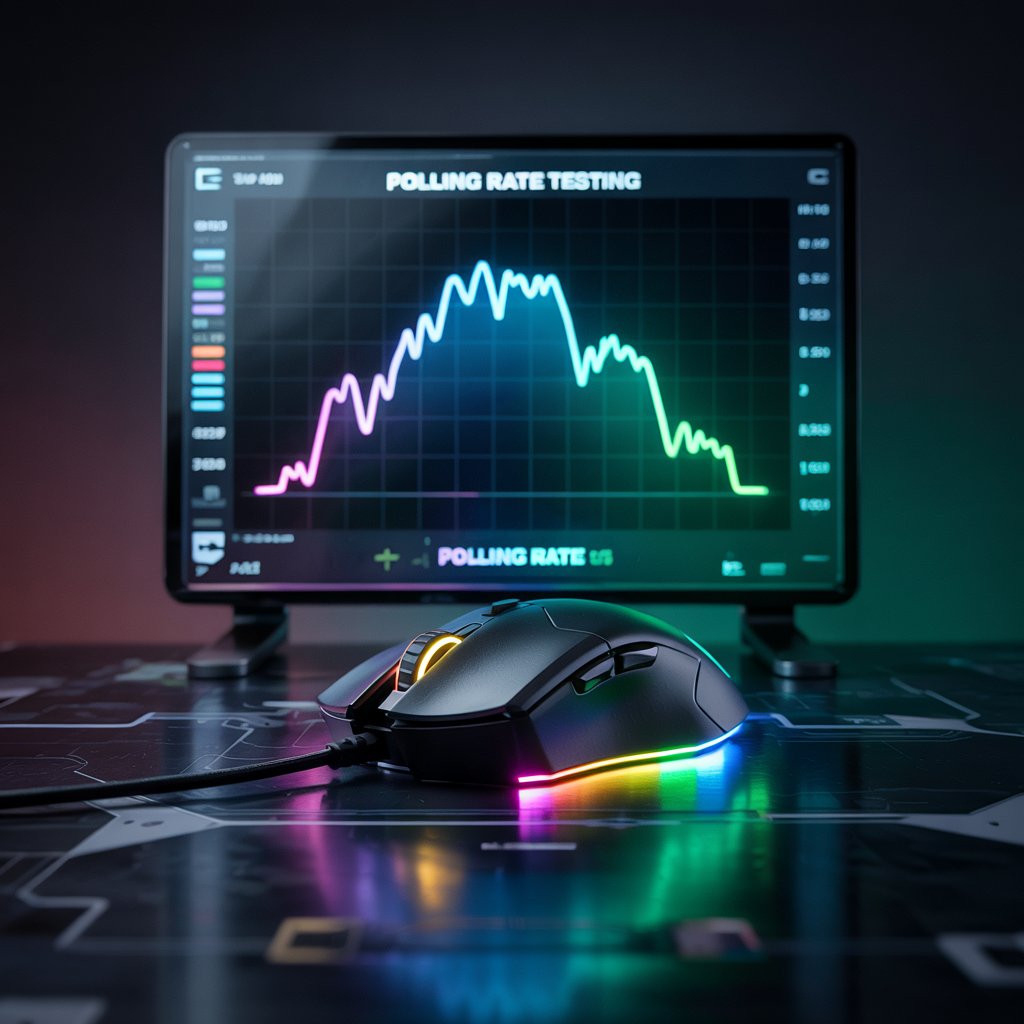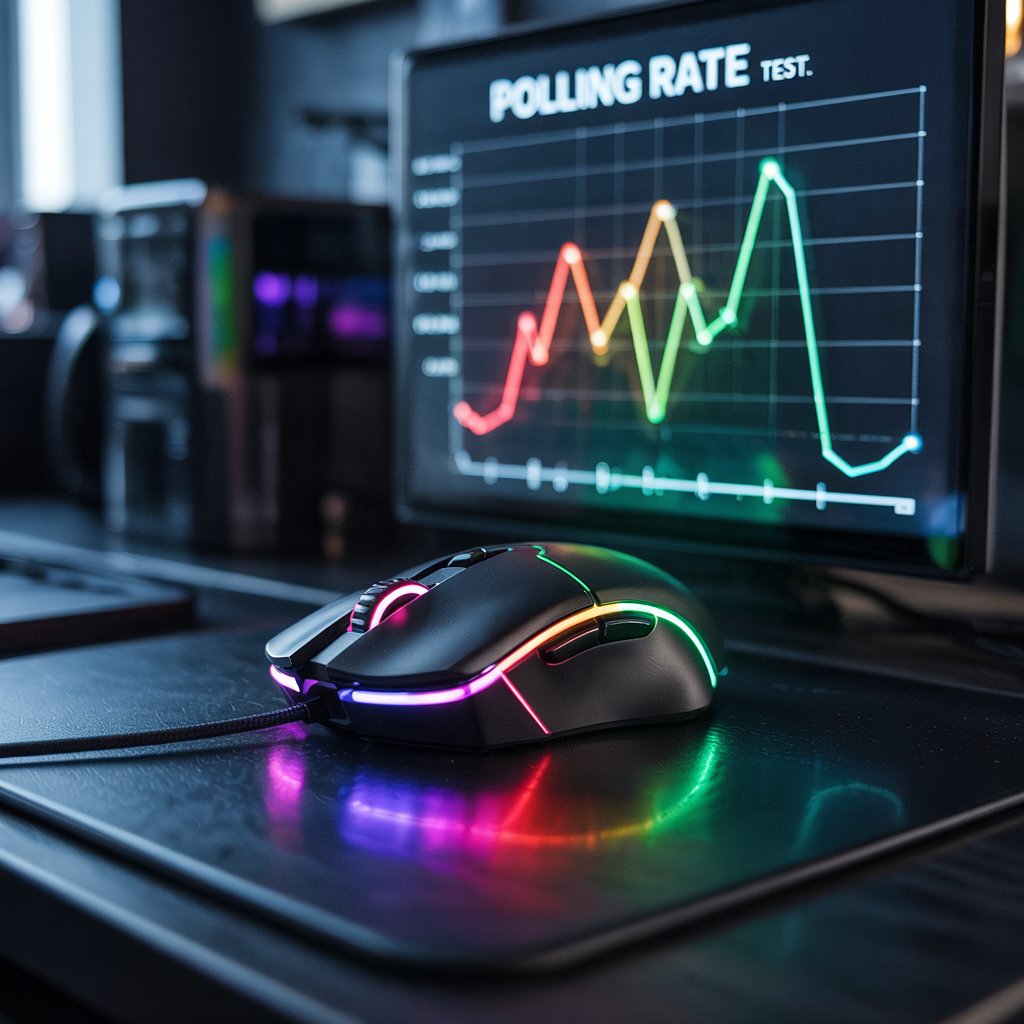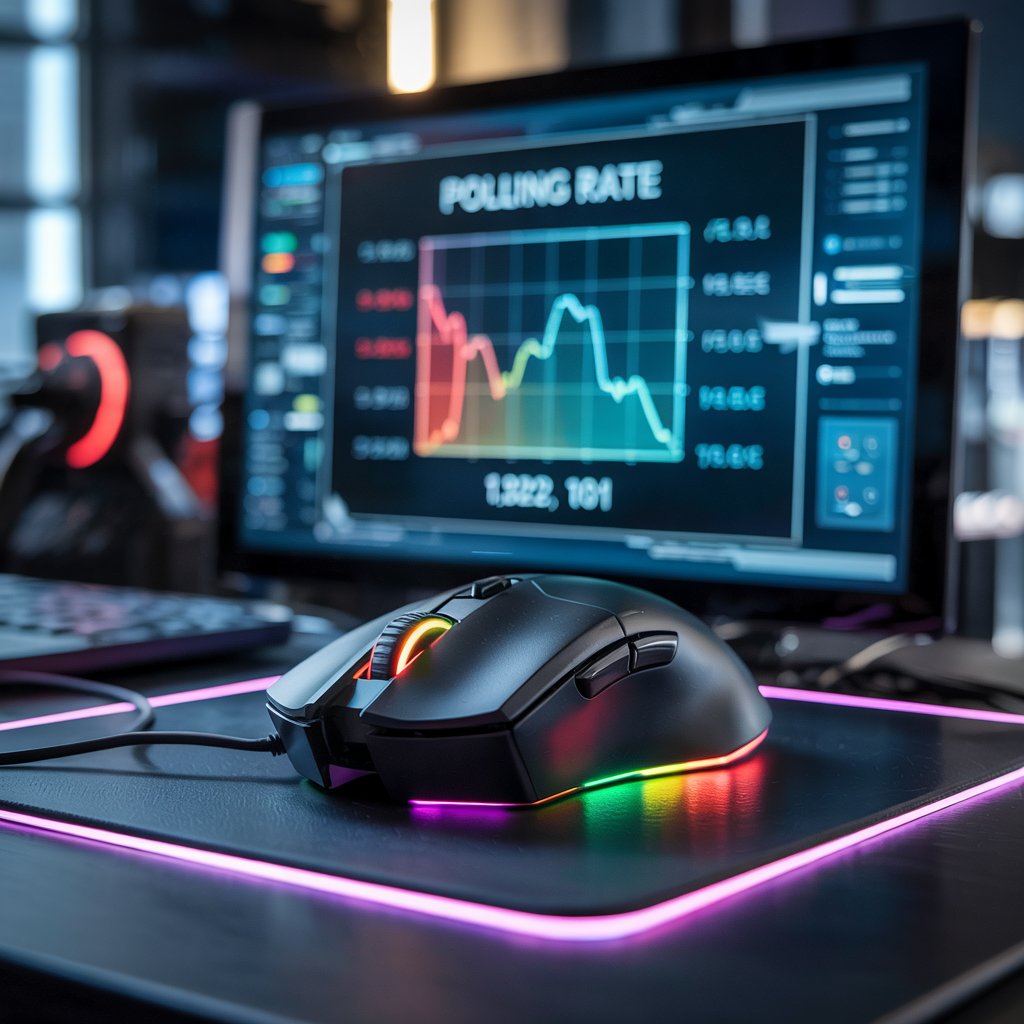Mouse Polling Rate Tester
Free Online Tool to Test Your Mouse Polling Rate
How It Works
This tool measures how frequently your mouse sends data to your computer (polling rate). A higher polling rate means smoother and more responsive mouse movements.
Steps:
- Click the "Start Test" button below.
- Move your mouse inside the green-bordered area for 10 seconds.
- Your polling rate will be displayed in Hz (Hertz).
Start Testing
Discover what MOUSE POLLING RATE TESTER is, how it impacts gaming and productivity, and learn how to test and optimize your mouse for peak performance. Find out the best polling rate for your needs!
Understanding Mouse Polling Rate: A Complete Guide
Mouse polling rate is one of those tech terms that often gets tossed around, especially in gaming and professional circles. But what does it really mean, and why should you care? Whether you’re a gamer aiming for the perfect aim or just someone curious about optimizing your mouse’s performance, this guide has got you covered.
What is Mouse Polling Rate?

At its core, the mouse polling rate refers to how often the mouse sends data to the computer. It’s measured in Hertz (Hz), and it tells you how many times per second the mouse communicates its position to your system. So, if your mouse has a polling rate of 1000Hz, it sends data 1000 times per second. This makes your movements smoother and more responsive.
The Basics of Mouse Polling Rate
Think of your mouse like a runner in a race. The faster they run, the quicker they can deliver information. A higher polling rate means your mouse can “talk” to your computer more frequently, resulting in faster response times and more accurate movements. This can be a game-changer, especially in fast-paced gaming or professional tasks.
Why Mouse Polling Rate Matters for Gamers and Professionals
For gamers, the difference between a 500Hz and 1000Hz polling rate can be the difference between landing a headshot or missing your target entirely. The more frequently your mouse updates its position, the better the overall experience. Likewise, professionals who rely on precise mouse movements—graphic designers, video editors, etc.—can benefit from higher polling rates for smoother workflows.
How to Test Your Mouse Polling Rate
Now that you know what polling rate is, how do you test it? You don’t need to be a tech guru to check your mouse’s polling rate; there are plenty of easy ways to do it.
Online Mouse Polling Rate Testers
The quickest method is using an online polling rate tester. These are websites that can help you test your mouse’s polling rate with just a few clicks. They work by measuring how quickly your mouse moves and comparing it to expected values.
Software Tools for Polling Rate Testing
For more accurate results, you might want to use software designed specifically for this purpose. Tools like USBDeview or Mouse Rate Checker are simple to use and can give you real-time data on your mouse’s polling rate.
Gaming Mouse Software for Mouse Polling Rate
If you have a gaming mouse, there’s a good chance it comes with software like Razer Synapse, Logitech G Hub, or SteelSeries Engine. These programs not only allow you to change your polling rate but also give you an option to test and monitor it directly within the software.
How Mouse Polling RateAffects Performance
What does all this mean in practical terms? Well, the polling rate impacts your mouse’s performance in several ways, especially in tasks that require precision.
Polling Rate and Mouse Sensitivity
Higher polling rates can enhance sensitivity, making your mouse more responsive. But be careful: just because your mouse has a high polling rate doesn’t mean it will make you a better gamer. Other factors like DPI (dots per inch) and in-game sensitivity settings matter too.
The Role of Polling Rate in Gaming and Work Efficiency

In gaming, a high polling rate ensures that your inputs are reflected almost instantaneously on the screen. This reduces lag, giving you a competitive edge. In professional work like CAD design or video editing, a stable polling rate can reduce jittery movements, providing a smoother experience overall.
The Relationship Between DPI and Polling Rate
You might have heard of DPI (dots per inch), another important term in the mouse world. But how do DPI and polling rate work together?
Understanding DPI (Dots per Inch)
DPI measures the mouse’s sensitivity. The higher the DPI, the further the cursor will move for each inch the mouse travels. A high DPI means your movements are more sensitive, allowing you to make quick adjustments with less physical movement.
How DPI and Polling Rate Work Together
DPI and polling rate are like a dynamic duo. A high polling rate ensures that your high-DPI mouse accurately registers every tiny movement. A mouse with a low polling rate might struggle to register quick, small adjustments, even if it has a high DPI.
The Best Polling Rate for Your Mouse
When it comes to choosing the best polling rate for your mouse, it’s all about striking the right balance.
Standard Polling Rates vs High Polling Rates
Most standard mice come with a polling rate of 500Hz or 1000Hz. These rates are sufficient for most everyday tasks, but if you’re into high-end gaming, you may want to consider going for a 1000Hz polling rate to get that ultra-smooth experience.
What Polling Rate Do Pro Gamers Use?
Pro gamers often swear by 1000Hz polling rates. The responsiveness it provides can be critical in fast-paced games like first-person shooters, where split-second decisions can make all the difference.
Common Myths About Mouse Polling Rates
Let’s clear up some common misconceptions about polling rates.
Does a Higher Polling Rate Always Mean Better Performance?
Not necessarily. While a higher polling rate is beneficial in most cases, it won’t magically improve your gameplay. Other factors, such as your reaction time and the game’s frame rate, also play key roles.
The Impact of Polling Rate on Everyday Use
If you’re just browsing the web or checking emails, a high polling rate won’t make a noticeable difference. However, if you’re playing fast-paced games or editing video, a higher polling rate will surely improve your experience.
Why You Should Test Your Mouse Polling Rate Regularly
It’s a good idea to check your mouse’s polling rate regularly to ensure it’s working at peak performance.
Maintaining Optimal Mouse Performance
By testing your mouse regularly, you can catch any issues like lag or unresponsiveness early on and fix them before they become a problem. It’s a simple way to ensure you’re getting the most out of your device.
Conclusion: Maximizing Your Mouse’s Potential

A high polling rate can make a significant difference in both gaming and professional tasks. By understanding how it works and testing your mouse’s polling rate, you can unlock the full potential of your mouse, leading to smoother, more responsive performance. Whether you’re gaming or working, the right polling rate can improve your overall experience.
FAQs
- What is the ideal polling rate for gaming? For most gaming setups, a polling rate of 1000Hz is ideal. It provides the best balance of responsiveness and smoothness.
- Does the polling rate affect everyday tasks? No, the polling rate is most noticeable during gaming or tasks that require precision. Everyday tasks like browsing the web won’t benefit much from a high polling rate.
- Can I change my mouse’s polling rate? Yes, many gaming mice come with software that allows you to adjust the polling rate. Alternatively, some software tools can help you monitor and change it.
- How can I test my mouse’s polling rate? You can test your mouse’s polling rate using online tools, dedicated software, or gaming mouse software.
- Does a higher polling rate mean better accuracy? Higher polling rates generally lead to more responsive input, but accuracy also depends on other factors like DPI and your skill level.
